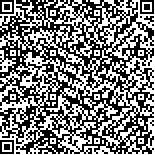本文已被:浏览 1353次 下载 1116次
Received:December 20, 2017 Published Online:June 20, 2018
Received:December 20, 2017 Published Online:June 20, 2018
中文摘要: 目的 评估泪小管栓塞治疗对白内障术后干眼症的效果及安全性。方法 选取22例(34眼)行白内障超声乳化联合人工晶体植入术(以下简称白内障手术)的患者,术中将可降解泪小管塞植入上、下泪小管。分别于白内障手术前、术后1周、1个月及3个月随访,内容包括国家眼科学会视功能问卷(NEI-VFQ25)、眼表疾病指数量表(OSDI)问卷调查、泪河线高度(TMH)、角膜荧光素染色评分、基础泪液分泌试验(ST-I)、泪膜破裂时间(tBUT)及印迹细胞学检查。随访期间观察相关不良反应。结果 白内障术后1周、1个月及3个月时OSDI总分分别为13.88±6.21、13.87±6.64、10.75±5.03,均较术前(19.67±5.82)显著降低(P=0.021、0.024、0.001)。术后各时间点干眼症状评分及NEI-VFQ25眼痛部分评分与术前差异无统计学意义(P<0.05)。术后1周、1个月、3个月时tBUT延长,角膜荧光素染色评分较术前降低(P<0.05)。术后1周、1个月TMH显著增加(P<0.05)。印迹细胞检查结果示,杯状细胞密度在术前(229.57±120.03)、术后1个月(241.31±96.10)、术后3个月(257.02±104.96)三个时间点间无统计学差异(P>0.05),且未见显著鳞状上皮化生。随访期间无严重并发症出现。结论 白内障手术中的泪小管栓塞治疗可安全、有效地改善术后干眼症,提高泪膜稳定性,进而缓解干眼症状,提高患者术后生活质量。
Abstract:Objective To evaluate the effect and safety of lacrimal canaliculus embolism for dry eye syndrome after cataract surgery. Methods Thirty-four eyes of 22 patients were treated with phacoemulsification and intraocular lens implantation (hereinafter referred to as cataract surgery), and intraoperative insertion of degradable lacrimal canalicular plug into the upper and lower lacrimal canaliculus was conducted. 25-item national eye institute visual function questionnaire (NEI-VFQ25), ocular surface disease index (OSDI), tear meniscus height(TMH), cornea fluorescein staining, Schirmer test I (ST-I), tear break-up time (tBUT), imprint cytology (IC) were observed before cataract surgery and at 1 week, 1 month, 3 months after surgery. The related adverse reactions were also observed during the follow-up period. Results OSDI score was 13.88±6.21, 13.87±6.64, 10.75±5.03 respectively at 1 week, 1 month and 3 month after operation and decreased compared with pre-operation(19.67±5.82) significantly(P=0.021, P=0.024, P=0.001). At postoperative time points, the ocular pain scroing of dry eye symptom and NEI-VFQ25 showed no significant changes (all P>0.05), but tBUT increased, and cornea fluorescein staining score decreased compared with preoperation (all P<0.05). TMH increased at 1 week and 1 month after cataract surgery(all P<0.05). IC showed no significant difference in goblet cell density between preoperative(229.57±120.03), postoperative one month(241.31±96.10), and postoperative 3 months(257.02±104.96)(P>0.05). And no serious squamous metaplasia. No serious complications occurred during the follow-up period. Conclusion The lacrimal canaliculus in cataract surgery can improve postoperative dry eye disease safely and effectively, increase tear film stability, alleviate dry eye symptoms and improve the quality of life after operation.
keywords: Cataract surgery Dry eye syndrome Lacrimal canaliculus embolism Quality of life 25-item national eye institute visual function questionnaire Ocular surface disease index Tear meniscus height Tear break-up time
文章编号: 中图分类号: 文献标志码:A
基金项目:首都临床特色应用研究项目(Z141107002514042)
| Author Name | Affiliation |
| ZHANG Zhi-ke*, LI Xue-min, WANG Wei | *Department of Ophthalmology, China-Japan Friendship Hospital, Beijing 100029, China |
| 李学民2 | 2.北京大学第三医院眼科,北京 100191 |
| 王薇2 | 2.北京大学第三医院眼科,北京 100191 |
| Author Name | Affiliation |
| ZHANG Zhi-ke*, LI Xue-min, WANG Wei | *Department of Ophthalmology, China-Japan Friendship Hospital, Beijing 100029, China |
| 李学民2 | 2.北京大学第三医院眼科,北京 100191 |
| 王薇2 | 2.北京大学第三医院眼科,北京 100191 |
引用文本:
